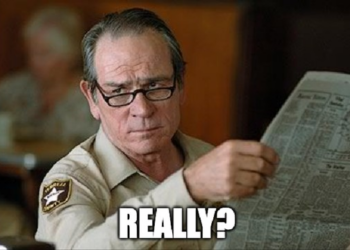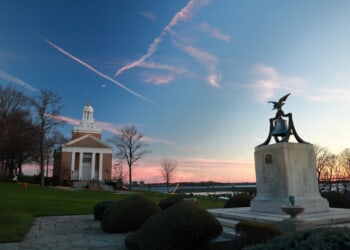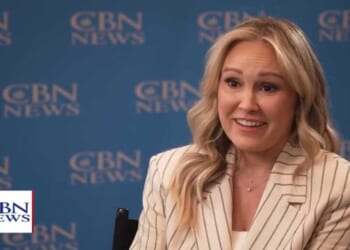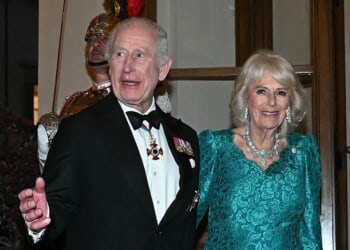Ross Hutton is Vice-Chair of Campaigns for the Glasgow Conservative Association.
“Do what you feel in your heart to be right, for you’ll be criticised anyway.”
Those words from Eleanor Roosevelt provided the flourish on Jamie Greene MSP’s post on X announcing that he had resigned the Scottish Conservative and Unionist Party whip at Holyrood.
Mr Greene cited a long list of concerns regarding his now former party’s direction of travel under Russell Findlay (Including the, always vulgar, expression that he had not left the party, but the party had left him), however, the most notable criticism was that he believed the party was veering too far to the right – adopting a “Reform-lite agenda” in an effort to chase “fringe right wing Scottish voters”, of which there are, apparently, few.
The irony of including Mrs Roosevelt’s words to underpin his criticism of another politician doing what they feel in their heart to be right, appears to have been lost on him.
What was not lost on anybody north of the border was his defection to the Liberal Democrats the day following his resignation.
Nor has it been lost that the core of Mr Greene’s critique – that the Scottish Conservatives have “moved too far to the right” in an effort to attract a type of Scottish voter that just simply does not exist – is apparently one that is shared by many within the party. A recent graphic in The Times depicted Mr Findlay being bound to a Liberal Democrat horse and Reform horse, both of which were pulling him in different directions.
So, just over one year out from the Scottish Parliamentary Elections, the salient question is this – which horse should Mr Findlay ride?
Option one is to swallow the diagnosis and prescription provided by Mr Greene and retreat to the centre ground on a policy platform barely indistinguishable from the Liberal Democrats. The party has been able to get away with this over the previous decade by majoring on the Unionist cause. While there is no question of the electoral expediency of this, bringing the party to dizzy new heights at Holyrood, we are now seeing the double-edged nature of that sword.
Over these years, the Scottish Conservative and Unionist Party has become the Scottish Unionist and Conservative Party, which has brought short-term political wins over long-term Conservative results. As a result, now that even John Swinney admits that the constitutional question is not at the forefront of the electorates minds, the party is struggling to revert to articulating a Conservative vision for itself and for Scotland. Accordingly, if we go into an election on a manifesto so unoriginally boring that nobody is reading, majoring on a constitutional question that nobody is asking, we will be talking into a void where nobody is listening. At that point, we will be not be tempting fate to bare out some of the more drastic polls, but basically begging it.
Then there is the second horse. The Reform horse.
Reform remains a bit of an enigma in Scotland so far in the sense that nobody really knows what they stand for, including themselves. The recent example of Nigel Farage saying he’d rather prop up an SNP administration than a Labour one demonstrated the contradiction at the heart of their Scottish branch, with Reform attracting an eyebrow raising number of SNP voters and perennial disrupters. They are polling at almost the same level as the Scottish Conservatives basically on vibes alone, and therefore exercising a great deal of imagination on dreaming up ways to attack thin air is futile. It distracts from the larger and much more difficult task of articulating why we matter, as opposed to why they don’t.
Stuck between these two impossibilities, despondency would be easy. You could view this as the precipice from which we will fall without a parachute into the abyss of irrelevance as a political world changes and leaves us behind. There is still every chance that this could be the case.
Or you could back the third horse.
The opportunity that presents itself to Mr Findlay and the Scottish Conservatives at large is that, in the absence of any true Conservative vision that has been articulated over the past decade, there is a chance to shape one now. There is the chance to create one of the most exciting and radical Conservative movements in the country.
In 1979, America was a country one year out from an election, suffering from a floundering administration who were stifling the country with a economic stagnation, high taxation and an oversized state. Sound familiar? Out of that climate emerged the Movement Conservatives – a radical new conservative philosophy that was epitomised by Ronald Reagan and his allies.
Movement Conservatism rejected the orthodox consensus in Washington, D.C. by going on a mission to cut taxes, encourage the free-market and champion individual liberty. The rest, as they say, is history. Today, Scotland stands at just such a juncture. We have an economy that has been throttled by almost two decades of nationalist neglect, a state that has overgrown itself and a taxation system that is currently pushing the best and brightest to leave.
Just like the Americans who rejected decline in 1980 by voting for a radical conservative vision, it is our duty to offer the people of Scotland the same choice. This is not about being “Reform-lite”, but it’s about being Conservative-heavy. Nor is about running too far to the right, but about running towards what is right. Elections are not won from the centre ground, but from the common ground, and despite what the newest Liberal Democrat MSP would have you believe, the common ground in Scotland has shifted to the right.
Support for tax cuts and a smaller state has, for the first time, become the position held by most Scots. This is a direct result of the Scottish Government operating with six tax bands compared to the three set by Westminster, which means that anyone earning slightly over £30,000 pays more tax in Scotland than they would do in England. Aligning the Holyrood tax bands with Westminster would save workers on an income of £50,000 approximately £1,540 a year and those earning £100,000 would save £3,346 annually. Call it a Tartan Tax Cut, if you will.
Scotland’s spending on public services is higher than England’s by approximately £2,217 per person, with ever-worsening results. Mr Findlay has outlined previously the absurdity of some of the Scottish Government quangos that have managed to leech off the state, and creating a Holyrood style DOGE would provide capital to pay for tax cuts and the resources to reform public services.
Public opinion has moved not just fiscally to the right, but socially as well.
Only 21 per cent of voters said that they supported the SNP’s controversial Hate Crime Act, which exemplifies the ever-growing revolt in Scotland against encroachments on free speech and civil liberties. These are scandals that cannot continue, but they are scandals that open the door for the Scottish Conservatives to articulate our core values again of smaller state, lower taxation and greater individual freedom. There is the opportunity to create a genuinely Conservative Moment in Scotland, through first creating a Conservative Movement.
The choice for our leader and our party is not to ride the horses of retreat or Reform, but to ride the horse of radicalism. There will be many who will be wary of going down this route, but we are bleeding time and votes until the election. Stagnation is decline and decline is defeat.
The words of another esteemed former First Lady springs to mind: “You can’t be afraid to take a stand – even when its unpopular. Courage is the price of leadership.” If Russell Findlay can embody the spirit of Nancy Reagan’s husband, then our path to revival may not be as narrow as it seems.


![NYC Tourist Helicopter Falls into Hudson River, Siemens Executive and Family Among Those Killed [WATCH]](https://www.right2024.com/wp-content/uploads/2025/04/NYC-Tourist-Helicopter-Falls-into-Hudson-River-Siemens-Executive-and-350x250.jpg)






![Red Sox Fan Makes the ‘Catch of the Day’ with Unconventional ‘Glove’ [WATCH]](https://www.right2024.com/wp-content/uploads/2025/04/Red-Sox-Fan-Makes-the-‘Catch-of-the-Day-with-350x250.jpg)
![Green Day’s Cringe Trump Diss Ends in Fire and Evacuation [WATCH]](https://www.right2024.com/wp-content/uploads/2025/04/Green-Days-Cringe-Trump-Diss-Ends-in-Fire-and-Evacuation-350x250.jpg)






